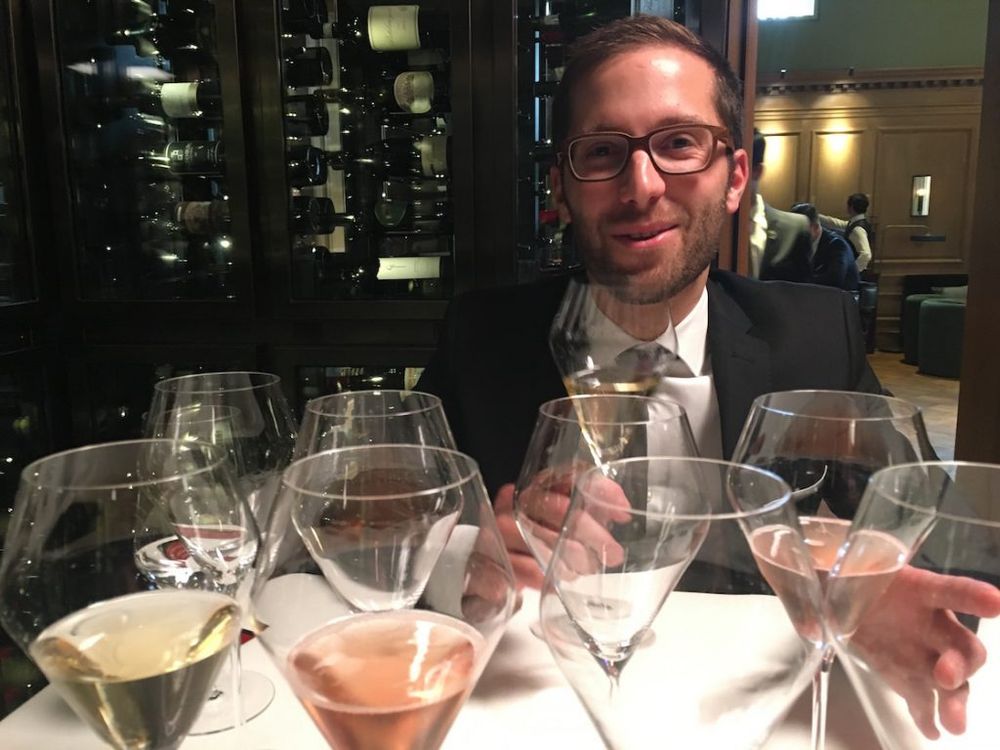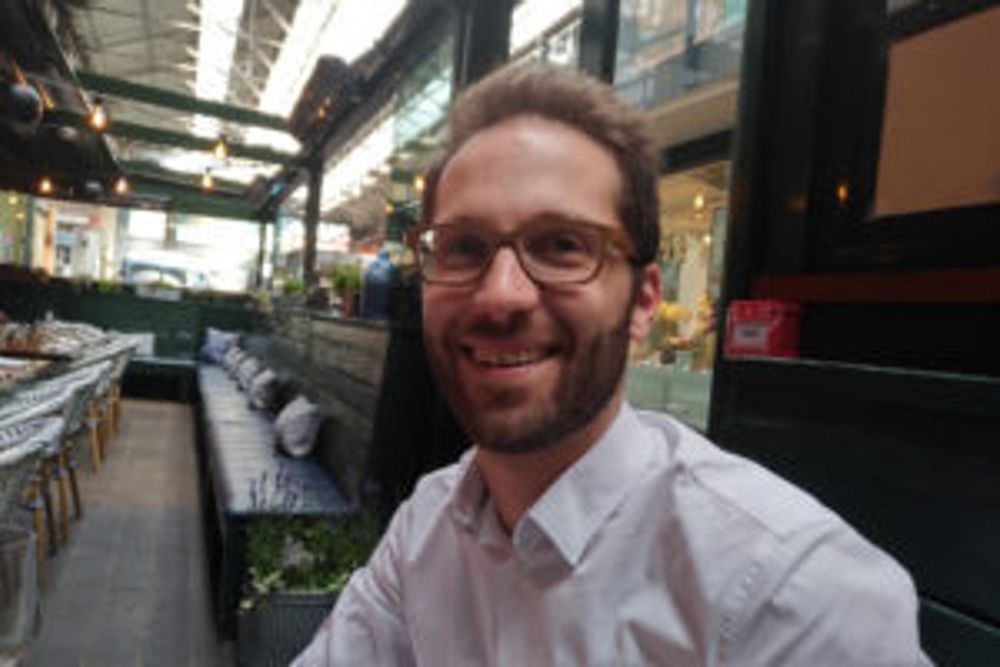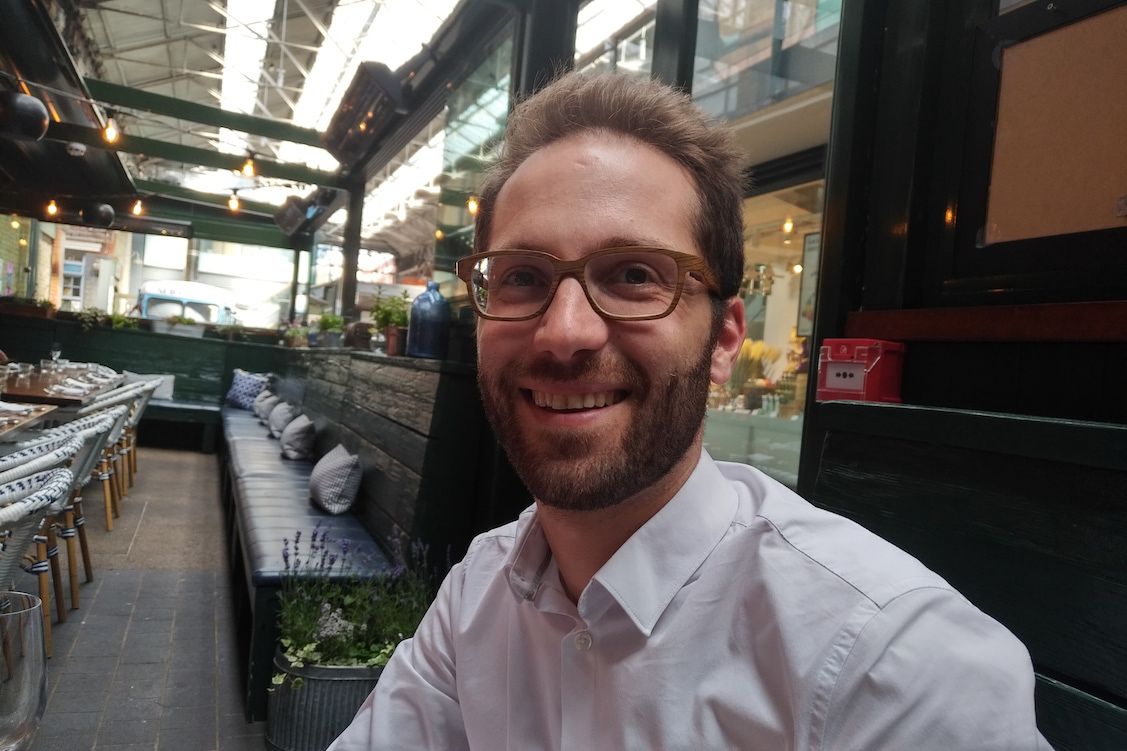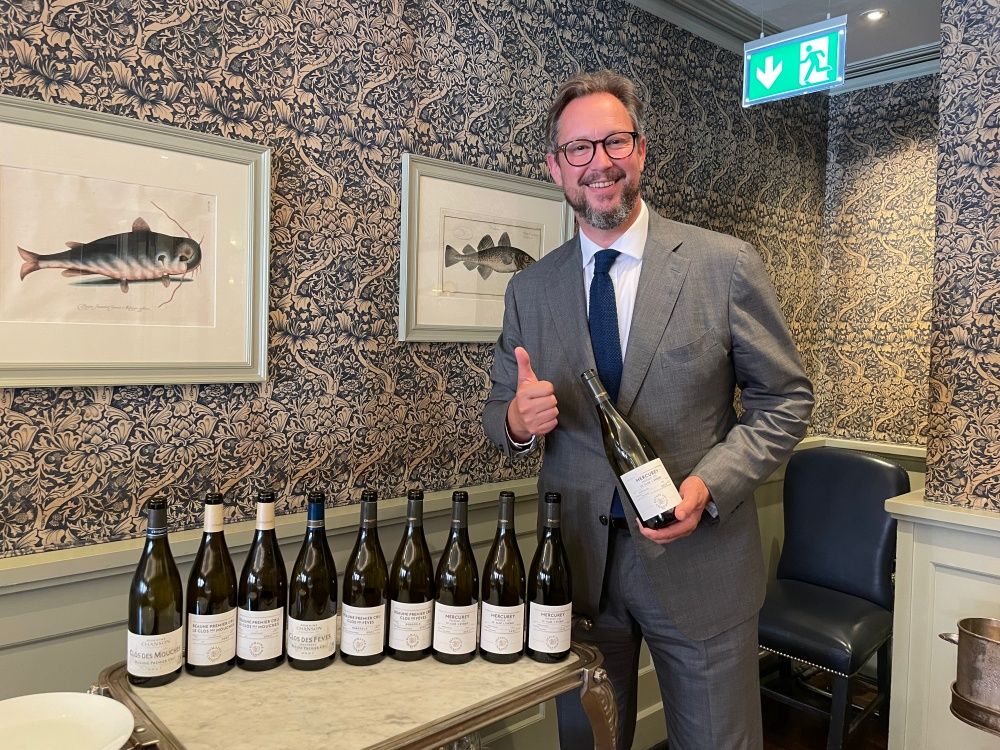Boutillat emphasises that the house is not aiming for organic certification – he feels that is too narrow a focus, he prefers to look at sustainability at a global level.
Champagne Piper Heidsieck has offered something special to the on-trade for a while: its Essentiel range which is based on the same blend as its non-vintage cuvée but enjoys longer ageing and lower dosage. In a new development, Essentiel is now also offered as a personalised edition for Piper-Heidsieck’s best clients.
Piper-Heidsieck’s new chef-de-cave, the 32-year-old Émilien Boutillat was in London to launch it in what turned out to be his first UK visit in his new role. The young cellar master is bursting with ideas and drive and looks to a future of audacity, transparency and ‘vitibots’.

“Hiring me was audacious”: Boutillat in January 2017 when he was chef-de-cave at Armand de Brignac
Boutillat grew up in Champagne where his father is a grower: “I worked with him in the vineyard and the cellar, did riddling and tasting with him,” Boutillat says and reels off his impressive roster of international experiences:
“I decided to study winemaking and viticulture in Montpellier. I also wanted to work outside of Champagne, so I worked for Château Margaux for nine months, then in Châteauneuf-du-Pape, and then I spent three years abroad: with Mud House in Marlborough, New Zealand; with Peter Michael in Sonoma; then with Viu Manent in Chile’s Colchagua Valley – then I came back because I wanted to do a harvest in France for Foncalieu in the South of France, then for La Motte in Franschoek, South Africa.”
Upon his return home he became chef-de-cave at Champagne Cattier and Armand de Brignac. Since October 2018 he has been at the helm of Piper Heidsieck, filling the shoes of Régis Camus, who is now solely responsible for Heidsieck’s spin-off prestige cuvée Rare.
“Piper Heidsieck has always been a very audacious house,” Boutillat says. “In terms of winemaking, like launching a very dark rosé [RoséSauvage], working with winemakers in the Côte des Bar and Aube for a long time, all of that. And I think hiring me, still quite young, and with international experience was audacious, too. I think my sensibility for sustainable farming was decisive, too. We are now also moving into that direction.” His challenge now is to maintain continuity while adapting to changing circumstances – especially in terms of climate.
“In Champagne you need to be patient. I won’t change the style of this brand, but I will work on small details. That is what I learned: how important every small detail is. I will focus on small details, check every step of the process and see what we can change. Even if it looks like a small change, it can make a huge difference. Viticulture is very important. Our vineyards are already certified sustainable. We have two labels: HVE3 (Haut Valeur Environmentalelevel 3) and VDC (Viticulture Durable en Champagne).”
Boutillat emphasises that the house is not aiming for organic certification – he feels that is too narrow a focus, he prefers to look at sustainability at a global level.

Boutillat at Wright Bros. London, July 2019
“As of 2020, we will no longer use herbicides, we are already close to zero; we use no insecticides and decrease the amount of treatments. We want to encourage biodiversity, so we planted various species of trees around the vineyards to get bees and insects back. But we also want to think globally in management – it’s more than organic, like purchasing sugar from Champagne [for dosage]. Like so many houses in Champagne, we work with growers and for us it makes way more sense to work with them, teach them to change practice, to move into the direction of sustainable farming than just to convert our own vineyards to organics. We want to think bigger and convince everybody first. This is the first step but we will try and improve every year.”
These measures extend to investing in a small start-up that is developing a ‘vitibot’, a viticultural robot. “We just received our first vitibot two weeks ago, it’s called ‘Bacchus’. Being sustainable means more work, so having an autonomous tractor will allow the farmers to do more.” Boutillat hopes the vitibot will be used for precision spraying in the future, for instance.
Another point for Boutillat is a renewed focus on harvest dates and adapting to ever-increasing vintage variation. “Keeping freshness is key, communicating this to the growers is a central task. Every year the growers are invited to taste the vins clairs. “It’s all about sharing information and knowledge.” He also intends to work on reducing total sulphur dioxide levels.
Is he planning on creating new cuvées?
“Maybe,” he says with a broad grin. So undoubtedly, he has ideas in the pipeline. But as he says again: “You have to be patient in Champagne.” For now he is still getting the measure of his new job. “I am working with the team to look at every process, to challenge every step. So far there is no big change, I want to take my time and keep listening. It’s good to re-assess everything and I will keep doing it.”

In the meantime, there is always their Essential Cuvée Reserve: it is a blend of 55% Pinot Noir, 20% Chardonnay and 25% Pinot Meunier, aged for four years and dosed at 5.5g/l: it opens with a little reduction, underneath of which there is both smoke and a sultry note of mocha. The palate is fresh with a touch of grapefruit zestiness and something mouth-wateringly salty and, ever so slightly, deliciously bitter. The finish is wonderfully brisk and clean and makes few concessions to the easy-going, high-dosed mainstream.
The Essentiel cuvée that Boutillat presented at Wright Bros Ltd. Restaurant is an example of their new personalisation service for good clients. So while Essentiel is a real step up from the non-vintage cuvée, this personalised edition of Essentiel is a cuvée determined by Piper-Heidsieck that is finished with input from the client.
The team behind Wright Bros decided on the wine the cuvée was dosaged with and the level of the dosage. The blend is 55% Pinot Noir, 30% Pinot Meunier and 15% Chardonnay. The Wright Bros team chose a Pinot Noir, a white reserve wine from 2008, to be used as the dosage wine and decided on a dosage level of 5g/l. Their new house cuvée hits the spot with its fresh nose that comes across as an intense but dispersing cloud of ozone sea air. I am sure the oyster shuckers at Wright Bros approve.










































